Gyeongju Country Club (경주컨트리클럽)
14.5Km 12809 2015-02-16
182-98, Bomun-ro, Gyeongju-si, Gyeongsangbuk-do
+82-54-745-2228
Gyeongju Country Club is located within Bomun Tourism Area with spectacular scenery of the Bomun Lake. It is within 15 minutes from Gyeongju and is aiming to become the best golf course in Korea.
The characteristic of Gyeongju Country Club is "Light Golf" which has enabled players to play golf at night and at daybreak under perfect light settings. It is located in Gyeongju, which is a tourism city, attracting the attention of tourists who love golf.
Seochulji Pond in Gyeongju (Lotus Flower) (경주 서출지)
14.9Km 16837 2020-04-04
17, Namsan 1-gil, Gyeongju-si, Gyeongsangbuk-do
+82-54-779-6079
Located at the foot of Namsan Mountain in Gyeongju, Seochulji Pond dates back to the Three Kingdoms Period. There are two, three-storied stone pagodas in the heart of Namsan Village and a small, elegant pond to the east. The pond is famous thanks to a Korean legend, written below:
In the 10th year of King Soji (488) of Silla, a crow and a mouse approached the king as he was on his way to Namsan Mountain. The mouse told the King to “follow after the crow” for an easy journey. So, the King and his servant (who was traveling with him) followed the crow, but became distracted and lost their way. As they were wandering about a pond (now known as Seochulji), an old man appeared from the waters’ depths and presented an envelope to the King. Based on the message in the envelope, the King instructed his servant to fire an arrow at the Geomungo (Korean musical instrument) case nearby. The shot killed the queen and a monk who had been hiding there, both of whom had been hatching a plot against the King.
The name of the pond, “Seochulji” (literally meaning “writing from the pond”) originates from this legend. It is said that a man named Imjeok built a building by the pond in the 5th year of King Hyeonjong (1664) to enjoy the scenery. The simple, yet elegant building still remains at the northwest of the pond.
Tomb of Queen Seondeok (경주 선덕여왕릉)
14.9Km 29749 2022-07-27
Baeban-dong, Gyeongju-si, Gyeongsangbuk-do
+82-54-779-6100
The Tomb of Queen Seondeok is a round tumulus with a circumference of 73 meters. Aside from the fact that it is circled by a protective two-layer rock, the tomb has no other unique features. As the oldest daughter of King Jinpyeong, Queen Seondeok became the first queen of the Silla Kingdom. During the 16th year of her reign, Bunhwangsa Temple and Cheomseongdae Observatory were built. She also ordered the construction of the famous nine-story wooden pagoda of Hwangyongsa Temple, a significant achievement of Buddhist architecture. While many of her efforts laid the foundation for the unification of Three Kingdoms of Korea, Queen Seondeok’s reign was plagued by rebellion and strife and she died in 647 during a rebellion, 23 years before unification was realized.
Hwarang Institute (화랑교육원)
15.0Km 19629 2024-02-23
62 Saenamsan-gil, Gyeongju-si, Gyeongsangbuk-do
Hwarang Institute is Korea's first character education organization. It aims to inherit the spirit of the Silla dynasty's Hwarang, a youth warrior group, and to cultivate good character and personality in children. Its facilities include Hwarang Hall, a playground, an auditorium, and a Safety Education Hall. Notably, the Safety Education Hall features an earthquake experience room, a life-saving room, and a 4D video room, where children can receive effective preventive safety education on health, crime, and natural disasters. Nearby tourist attractions include the Gyeongju National Museum, the Tomb of King Jeonggang, Gyeongju Millennium Forest Garden, and the Tomb of King Gyeongae.
Gyeongsangbuk-do Forest Research Institute (경상북도 산림환경연구원)
15.1Km 33773 2021-02-01
367, Tongil-ro, Gyeongju-si, Gyeongsangbuk-do
+82-54-778-3813
Located at the foot of Namsan Mountain in Gyeongju, Gyeongsangbuk-do Forest Research Institute is a popular spot for field trips and relaxation due to the institute's rare and rural forestry along with well-preserved endangered plants and wild flowers.
La Fleur (라플레르)
15.3Km 0 2024-02-28
421-11 Alcheonbuk-ro, Gyeongju-si, Gyeongsangbuk-do
La Fleur is a hanok café located near the UNESCO World Heritage Site Hwangnyongsa Temple. It offers a selection of beverages and simple meals like bibimbap and its signature menu item, avocado myeongnan bibimbap (avocado and pollack roe bibimbap). The café boasts a beautifully curated garden adorned with various trees and ornaments, while the interior is adorned with potted plants and decorative items.
Suseokjeong (수석정)
15.4Km 22833 2024-02-23
41 Naeri-gil, Gyeongju-si, Gyeongsangbuk-do
054-748-0835
Situated just ten minutes from the Gyeongju National Museum, Suseokjeong offers an opportunity to savor the refined culinary art of Korean table d'hote. Its signature dish is tteokgalbi jeongsik (grilled galbi patties set menu). The meal begins with warm sungnyung (scorched rice soup) served in a yugi bowl, followed by a hearty spread that includes jeonbokjuk (abalone porridge), tteokgalbi, and gungjung japchae (royal japchae). For dessert, guests can enjoy dried fruits and sujeonggwa (cinnamon punch). Nearby attractions include the Neungjitap Pagoda Site, Rock-carved Buddhas in the Tapgok Valley, and the Stone Seated Buddha in the Mireukgok Valley of Namsan Mountain.
Gyeongju Namsan Mountain (경주 남산)
16.1Km 64149 2024-02-27
Namsan Mountain of Gyeongju (경주 남산)
+82-54-771-7142
Namsan Mountain of Gyeongju is a 466-meter mountain located south of the Gyeongju city center. Gyeongju was the capital of the Silla dynasty (BC 57-AD 935) from its inception to its end. The Silla people revered this mountain, considering it sacred, and left many traces of their presence, resulting in numerous cultural relics that still exist today. Therefore, visitors can enjoy both hiking and cultural heritage sightseeing on this mountain.
Bunhwangsa Temple (분황사)
16.1Km 31442 2024-02-29
94-11 Bunhwang-ro, Gyeongju-si, Gyeongsangbuk-do
Bunhwangsa Temple, located next to the ruins of Hwangnyongsa Temple in Gyeongju, was established in 634 during the Silla dynasty. Visitors can see cultural assets such as the Stone Brick Pagoda designated as a national treasure, and the Pedestal for the Stele of State Preceptor Hwajaeng registered as a Historic Site. Despite being a significant and ancient temple, much of it was lost during wars such as the Mongolia invasions and the Japanese invasions of Korea, leaving only a few buildings and temple grounds like Bogwangjeon Hall. Nearby, there is the Hwangnyongsa Museum.
The Divine Bell of King Seongdeok (성덕대왕신종)
16.3Km 25673 2020-04-04
186, Iljeong-ro, Gyeongju-si, Gyeongsangbuk-do
+82-54-740-7500
The Divine Bell of King Seongdeok, the largest Korean bell preserved, stands 3.75-meter tall, has a lip diameter of 2.27 meters, and is 11 to 25 entimeters wide. In 1997, Gyeongju National Museum weighed it at 18.9 tons. The bell was cast to pay tribute to the memory of King Seongdeok. It was completed in 771 and named ‘The Divine Bell of King Seongdeok.’ However, because the bell was installed at Bongdeoksa Temple, it has also been called the Bell of Bongdeoksa.
The bell is also known as the Emile Bell, a name derived from an ancient legend in which a child was sacrificed in order to give sound to the bell, whose echoes of ‘em-ee-leh’ resemble the traditional Korean word for "mommy."
The tubular sound pipe at the top of the bell that helps the sound reverberate is a unique feature that can be found only in Korean bells. The yongnyu, which serves as a loop to hang the bell, has been decorated to resemble a dragon’s head. A band of arabesque patterns can be found at the shoulder, and the striking point of the bell is in the shape of a lotus flower.
The magnificent design and inscription methods used in this bell exemplify the artisan's craftmanship of the Unified Silla period. The bell is also inscribed with over one thousand Chinese characters, and its beauty and integrity have been meticulously preserved despite the passage of over 1,300 years.

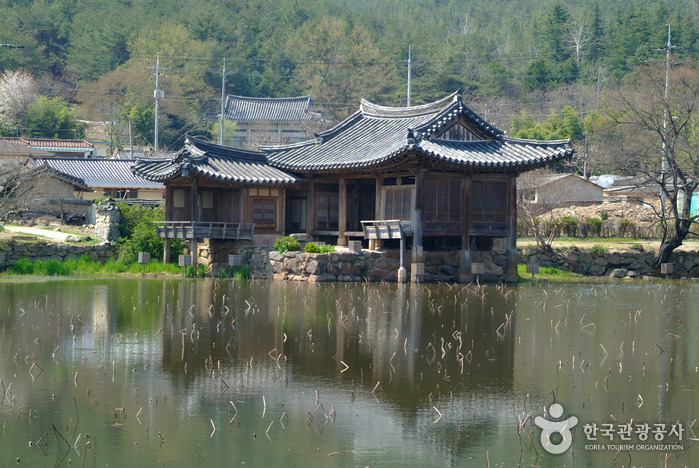
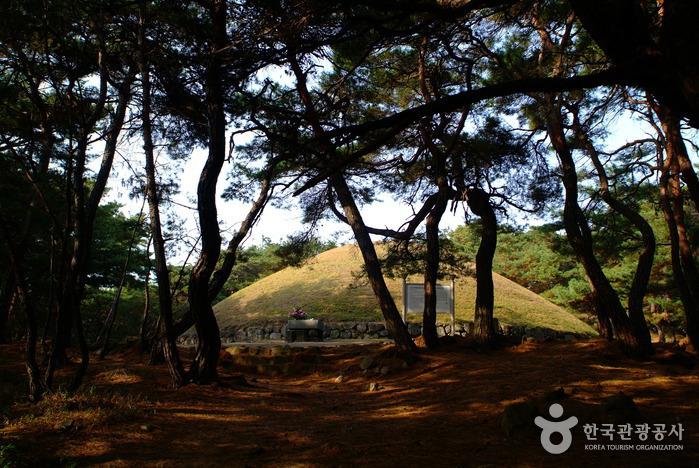
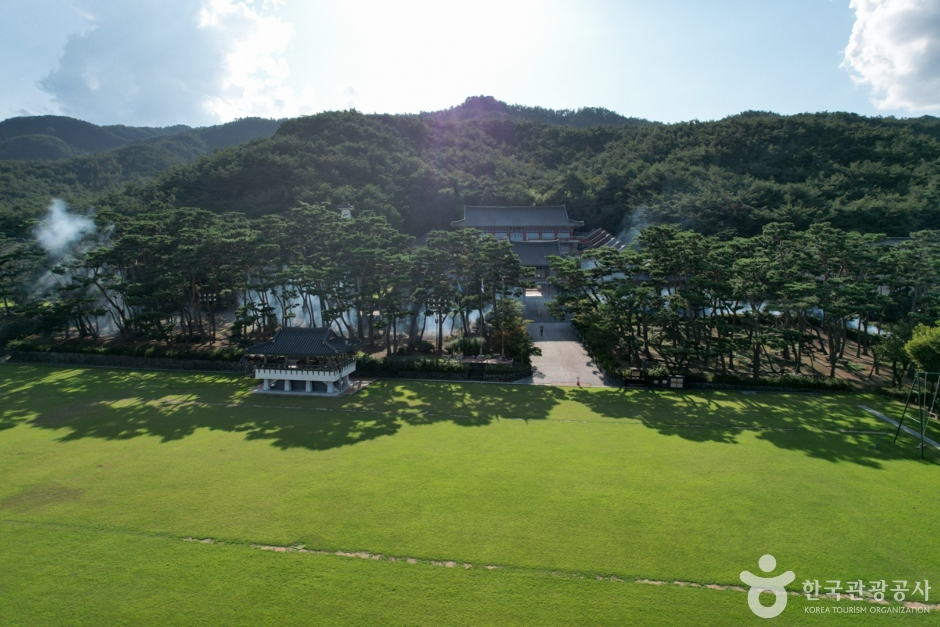
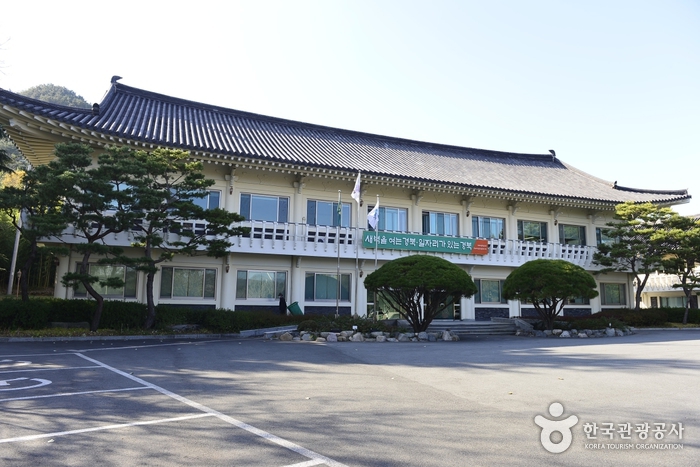
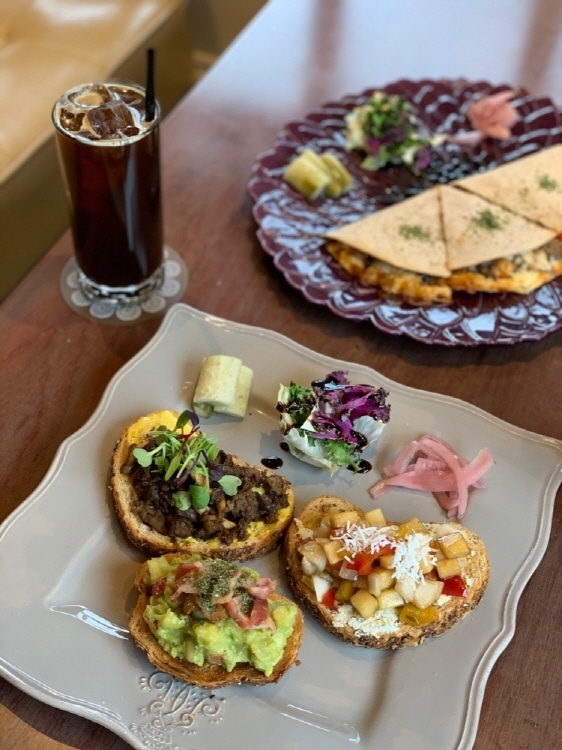
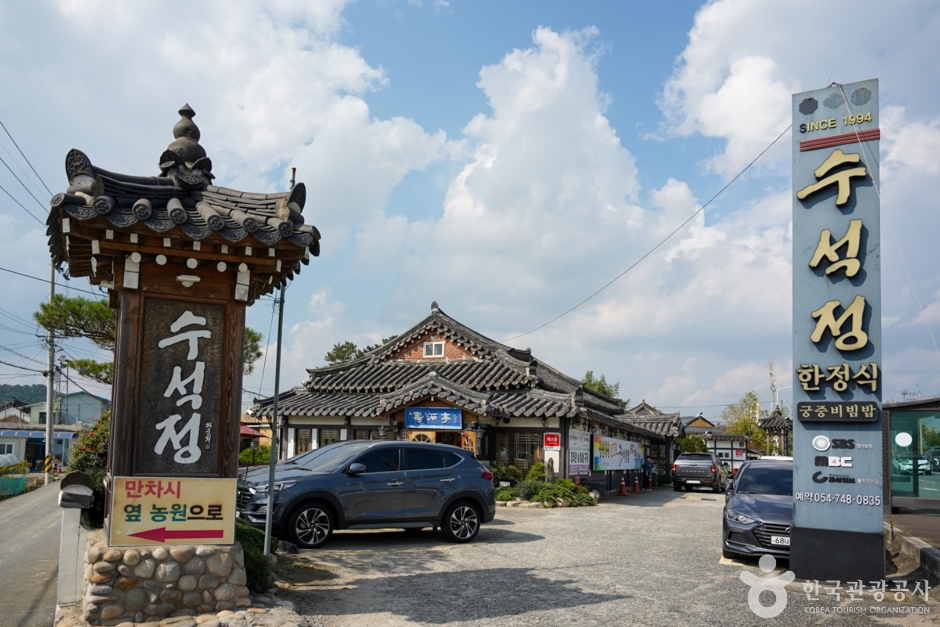
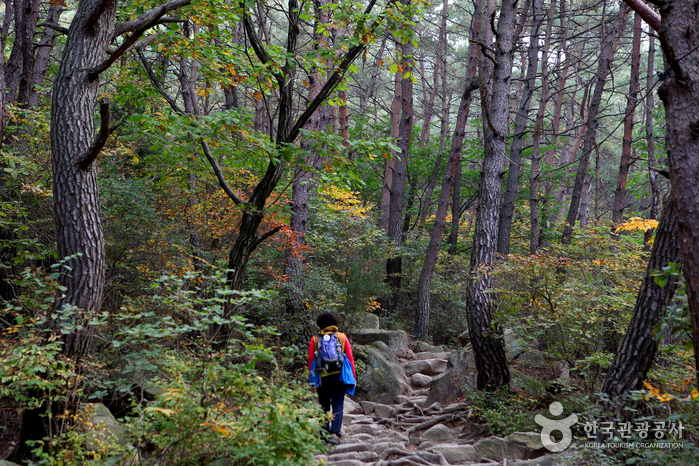
 English
English
 한국어
한국어 日本語
日本語 中文(简体)
中文(简体) Deutsch
Deutsch Français
Français Español
Español Русский
Русский